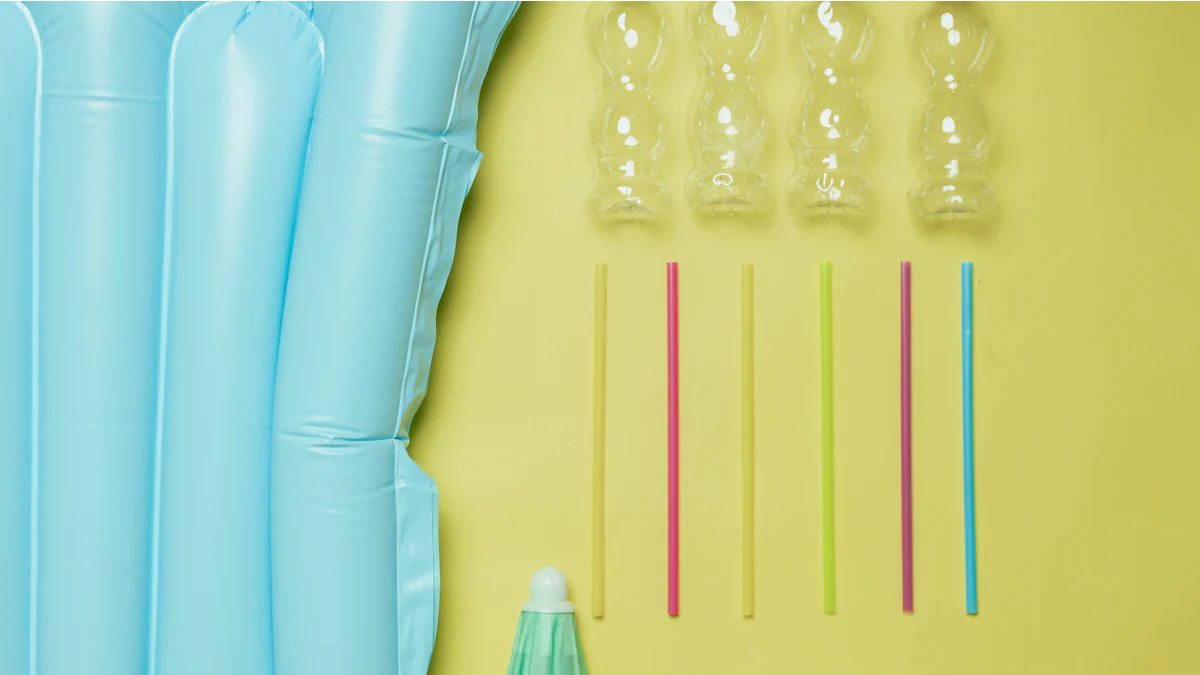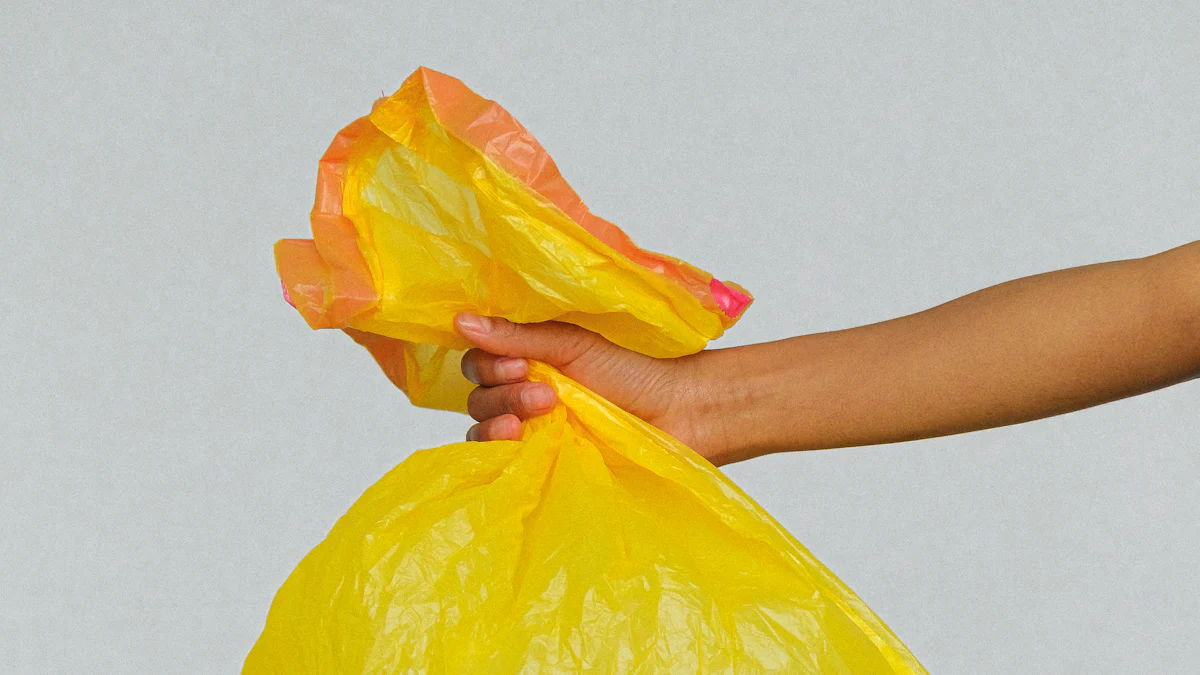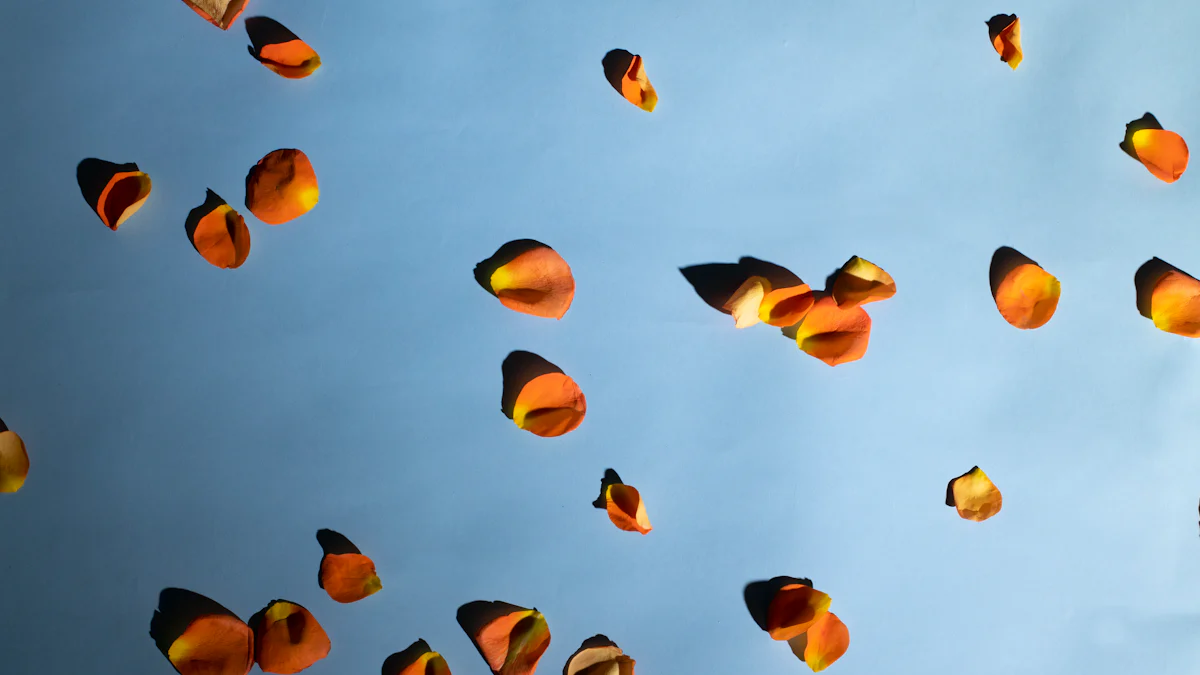
Have you ever thought about the impact balloons have on the environment? Traditional balloons can linger in ecosystems for years, causing harm to wildlife and contributing to plastic waste. That’s where biodegradable balloons come in. These eco-friendly balloons are made from natural materials like latex, allowing them to break down naturally after use. They’re an environmentally friendly alternative that supports sustainability while still adding joy to your celebrations. Unlike traditional balloons, biodegradable ones decompose quickly, reducing the risk of animals ingesting them or getting tangled in litter. By choosing biodegradable options, you’re helping to minimize waste and protect the planet.
Key Takeaways
Biodegradable balloons are made from natural latex. They break down faster than regular balloons, which take years to rot.
Using biodegradable balloons cuts plastic waste. It also lowers harm to animals since they are less likely to eat or get stuck in them.
Throwing them away correctly is important. These balloons need sunlight and water to break down, so don’t let them float away.
Try compostable balloons or reusable decorations. These can help the planet and make your parties eco-friendly.
Watch out for fake eco-friendly claims. Some biodegradable balloons aren’t as safe as they say. Always read labels and check what they’re made of.
What Are Biodegradable Balloons?

Definition and Features of Biodegradable Balloons
Biodegradable balloons are a sustainable alternative to traditional balloons. They’re primarily made from natural latex, which comes from the sap of rubber trees. This material is renewable and breaks down over time, making it a more eco-friendly choice. Unlike plastic-based balloons, biodegradable latex balloons don’t linger in the environment for decades. Instead, they decompose naturally when exposed to sunlight, oxygen, and moisture. These balloons are free from harmful chemicals, which means they’re safer for the planet and wildlife.
You might wonder, “What makes these balloons special?” Well, their ability to return to the earth without causing long-term harm is a game-changer. They’re designed to bring joy to your celebrations while reducing your environmental footprint.
How Biodegradable Balloons Differ from Traditional Balloons
Let’s compare biodegradable balloons with traditional ones to see how they stack up:
Feature | Traditional Balloons | Eco-Friendly Latex Balloons |
|---|---|---|
Biodegradability | Persist in the environment for years | |
Wildlife Threats | Pose a threat when ingested or entangled | Reduced risk of harm to wildlife |
Material Sustainability | Made from petroleum-based plastics | Made from renewable resources like latex |
Traditional balloons are made from synthetic materials like plastic or mylar, which can take hundreds of years to decompose. In contrast, biodegradable latex balloons break down much faster, especially under the right environmental conditions. This makes them a safer option for wildlife, as animals are less likely to ingest or get entangled in them.
Why Biodegradable Balloons Are Considered Eco-Friendly
Biodegradable balloons are often labeled as eco-friendly because they’re made from natural, renewable materials. Latex, the primary component, is harvested sustainably from rubber trees. These trees aren’t cut down during the process, which helps maintain forest ecosystems. Plus, the balloons decompose naturally, reducing the amount of litter that ends up in landfills or oceans.
However, it’s important to note that these balloons don’t disappear overnight. Studies have shown that biodegradable water balloons and other latex-based options can take months or even years to fully break down, depending on environmental conditions. While they’re not perfect, they’re a significant improvement over traditional balloons when it comes to sustainability.
Tip: If you’re looking for an even greener option, consider compostable balloons or reusable decorations for your next celebration. They’re a great way to reduce waste and promote sustainability.
How Are Biodegradable Balloons Made?
Materials Used in Biodegradable Balloons
Natural Latex and Its Harvesting Process
Biodegradable balloons start with natural latex rubber, which comes from the sap of the Hevea brasiliensis tree. You might be surprised to learn how sustainable this process is! Here’s how it works:
Workers tap the tree by making small cuts in its bark.
The sap, or liquid latex, flows out and gets collected.
This method doesn’t harm the tree, allowing it to produce latex for many years.
This renewable material forms the base of biodegradable balloons, making them a much greener choice compared to synthetic options.
Additives in Biodegradable Balloons
While natural latex is the main ingredient, a few additives are mixed in to improve the balloons’ performance. These include:
Preservatives to extend the balloon’s shelf life.
Plasticizers to make the latex more elastic.
Colored dyes to give the balloons their vibrant look.
However, some of these additives can slow down the decomposition process. That’s why it’s important to dispose of biodegradable balloons properly to minimize their environmental impact.
The Manufacturing Process of Biodegradable Balloons
Steps in Balloon Production
Making biodegradable balloons involves several steps. Here’s a quick breakdown:
A metal mold is dipped into a liquid latex solution.
The mold is slowly pulled out, allowing the latex to stick to it.
This dipping process is repeated until the balloon reaches the desired thickness.
The latex-coated mold is placed in hot water to solidify the latex.
Once the latex sets, the balloon is removed from the mold, washed, and dried.
Finally, the balloon is decorated or shaped as needed.
This process ensures that the biodegradable latex rubber balloons are durable yet eco-friendly.
Testing for Biodegradability
To ensure these balloons truly break down, manufacturers conduct rigorous tests. For example:
Balloons are exposed to sunlight, compost, saltwater, and freshwater for weeks.
Their stretchiness and chemical composition are checked regularly.
Even after 16 weeks, some balloons remain recognizable, though they lose mass or elasticity depending on the environment.
These tests highlight the importance of proper disposal. While biodegradable balloons decompose faster than traditional ones, they still need the right conditions to break down completely.
Environmental Impact of Biodegradable Balloons

How Long Do Biodegradable Balloons Take to Decompose?
Decomposition Timeline
You might be wondering, how long do biodegradable balloons take to decompose? The answer isn’t as quick as you’d hope. In natural environments, these balloons can take up to 15 years or more to fully break down. For example, studies have shown that latex balloons can maintain their shape for over 16 weeks, even under outdoor conditions. This means that while biodegradable balloons are better than traditional ones, they still linger in the environment longer than expected.
Environmental Conditions for Decomposition
The speed of balloon degradation depends heavily on environmental factors. Here’s what plays a role:
Humidity: High moisture levels weaken the latex, helping it break down faster.
Temperature: Warm climates speed up the process, while colder areas slow it down.
Sunlight: UV rays from the sun degrade latex, making direct sunlight crucial for faster decomposition.
In composting environments, oxygen, moisture, and the right temperature are essential. Without these, even biodegradable balloons can take years to degrade, leaving a lasting impact on the environment.
Environmental Factor | Description |
|---|---|
Temperature | Warmer temperatures accelerate breakdown. |
Moisture Levels | High humidity weakens the material. |
Sunlight | UV rays help degrade latex faster. |
Comparison of Biodegradable and Traditional Balloons
When comparing biodegradable balloons to traditional ones, the differences are clear. Traditional balloons, made from synthetic materials like mylar or plastic, can take hundreds of years to decompose. They also pose significant risks to wildlife, as animals often mistake them for food. On the other hand, biodegradable balloons are made from natural latex, which decomposes faster and doesn’t contribute to plastic waste. However, they’re not perfect. Before fully breaking down, they can still harm animals or alter soil structure.
Research shows that biodegradable balloons can take 15 years or longer to fully degrade. While they’re marketed as eco-friendly, their environmental safety isn’t guaranteed.
Environmental Benefits of Biodegradable Balloons
Despite their flaws, biodegradable balloons offer several environmental benefits. They’re made from renewable materials like latex, which supports sustainability. Unlike traditional balloons, they don’t release harmful microplastics into the environment. Plus, their ability to decompose naturally reduces the overall waste burden. If you’re looking for an even greener option, compostable balloons are a great choice. These break down more efficiently and leave no harmful residues behind.
Switching to biodegradable or compostable balloons is a small but impactful step toward reducing your celebrations’ impact on the environment. Every choice matters when it comes to sustainability.
Limitations and Controversies of Biodegradable Balloons
Greenwashing and Misleading Claims
You’ve probably seen claims that biodegradable balloons are the perfect eco-friendly solution. But are they really as green as they seem? Unfortunately, some of these claims fall into the category of greenwashing—marketing tactics that make products appear more environmentally friendly than they actually are.
Here are a few examples of misleading claims:
Balloons labeled as biodegradable often take months or even years to decompose, not the “quick breakdown” many brands advertise.
Some manufacturers claim these balloons leave no harm behind. In reality, chemical fillers and pigments can remain in the soil or water long after the balloon decomposes.
While marketed as safe for wildlife, non-biodegradable components like ribbons or dyes can still entangle or harm animals.
It’s important to look beyond the labels and understand the actual impact of these products. Don’t let flashy marketing distract you from making informed choices.
Challenges in Disposal and Decomposition
Even though biodegradable balloons are better than traditional ones, they’re not without challenges. Proper disposal is key, but how often do balloons end up in the right place? Many times, they’re released into the air or tossed into regular trash bins. This leads to environmental issues.
For these balloons to break down effectively, they need specific conditions like high humidity, warm temperatures, and exposure to sunlight. Without these, they can linger in the environment for years. Plus, chemical additives used to enhance elasticity or color can leave residues behind, further complicating decomposition.
Wildlife also faces risks. Marine animals and livestock may ingest balloon fragments, mistaking them for food. This can lead to internal injuries or even death. So, while biodegradable balloons are a step toward sustainability, they still require responsible handling.
Potential Environmental Risks of Biodegradable Balloons
You might think biodegradable balloons are harmless once they start decomposing, but that’s not always the case. During the breakdown process, chemical fillers and synthetic pigments can leach into the soil or water. These residues don’t always degrade completely, which can harm ecosystems.
Wildlife is another concern. Birds, for example, may eat balloon fragments, causing fatal blockages in their digestive systems. Marine animals like turtles often mistake balloons for jellyfish, leading to severe injuries or death. Even though these balloons are marketed as eco-friendly, their potential to harm animals and pollute the environment remains significant.
Choosing biodegradable balloons is a step in the right direction, but it’s not a perfect solution. You should weigh the risks and consider alternatives that align better with sustainability goals.
Eco-Friendly Alternatives to Balloons
If you’re looking for ways to celebrate sustainably, you’ve got plenty of options that don’t involve balloons. Let’s explore some creative and eco-friendly balloon options that can make your events just as festive while being kind to the planet.
Reusable and Sustainable Decorations
Fabric and Paper-Based Options
Reusable decorations are a fantastic way to reduce waste. You can try fabric bunting, which adds a charming touch to any party and can be reused for years. Paper lanterns and chains are also great choices. They’re lightweight, colorful, and easy to make at home. Want something more unique? Pinwheels, paper flowers, or garlands can brighten up your space without harming the environment. These options are not only beautiful but also an environmentally friendly alternative to single-use balloons.
Natural Decorations Like Flowers and Leaves
Nature offers some of the best decorations. Fresh flowers, potted plants, and even leaves can create stunning displays. You can use them as centerpieces, hang them as garlands, or scatter them around for a rustic vibe. The best part? They’re completely biodegradable and compostable, leaving no waste behind. Plus, they bring a natural, earthy feel to your celebrations.
Compostable Balloons and Other Biodegradable Options
Compostable balloons are a step up from biodegradable balloons. They’re made from natural latex with fewer synthetic additives, making them break down faster and more efficiently. Unlike traditional balloons, compostable balloons use organic pigments, so they don’t release harmful chemicals into the environment. They’re designed to decompose in composting conditions, leaving no trace behind. If you’re set on using balloons, compostable options are the most eco-friendly balloon options available today.
Digital and Virtual Celebration Ideas
Why not go digital? Virtual celebrations are a modern, waste-free way to mark special occasions. You can host a virtual party with friends and family, complete with digital decorations and themed backgrounds. Want to make it more interactive? Create a slideshow of memories or design a custom e-card for your guests. These ideas save resources and still let you celebrate in style.
Switching to these alternatives doesn’t just help the environment—it also adds a unique and personal touch to your events. By choosing sustainable options, you’re making a statement that celebrations can be joyful and responsible at the same time.
Biodegradable balloons offer a way to celebrate while being kinder to the planet. They’re made from natural latex, designed to break down over time, and pose less risk to wildlife compared to traditional balloons. However, they’re not perfect. Their decomposition depends on specific conditions, and some additives may leave residues in the environment.
Your choices matter. By understanding the benefits and limitations of biodegradable balloons, you can make more sustainable decisions. Why not explore reusable decorations or compostable options for your next event? Small changes can make a big difference for the planet. 🌍
FAQ
What makes biodegradable balloons different from compostable balloons?
Biodegradable balloons break down naturally over time but may leave residues. Compostable balloons decompose faster and leave no harmful traces. Compostable options are better for the environment if you have access to proper composting facilities.
Tip: Always check the label to confirm if a balloon is truly compostable!
Can I release biodegradable balloons into the air?
No, you shouldn’t release them. Even biodegradable balloons take years to decompose and can harm wildlife if ingested. Instead, dispose of them responsibly in compost or trash bins.
Note: Balloon releases, even with eco-friendly options, still pose environmental risks.
How can I dispose of biodegradable balloons properly?
Dispose of them in a compost bin or regular trash if composting isn’t available. Avoid leaving them outdoors, as they need specific conditions like sunlight and moisture to break down.
Reminder: Removing ribbons or strings before disposal helps reduce environmental harm.
Are biodegradable balloons safe for wildlife?
Not entirely. While they’re safer than traditional balloons, fragments can still harm animals if ingested. Wildlife may mistake them for food, leading to injuries or death.
Alert: Always clean up after your celebrations to protect animals and ecosystems.
Do biodegradable balloons cost more than traditional ones?
Yes, they’re usually more expensive. The sustainable materials and eco-friendly manufacturing processes increase their price. However, the environmental benefits often outweigh the extra cost.
Pro Tip: Consider reusable decorations to save money and reduce waste long-term. 🌱






26 thoughts on “Everything You Should Know About Biodegradable Balloons in 2025”
Pingback: Trending Balloon Garland Styles And Themes For 2025
Pingback: Why Helium Is Crucial For Balloons And What Are The Alternatives
Pingback: What All American Balloons Brings To Events
Pingback: How To Create Show-Stopping Balloon Decor For Any Event
Pingback: What Are Biodegradable Balloons And How Do They Break Down
Pingback: How to Select the Perfect Number Balloons in 2025 – Chaoee
Pingback: How to Pick the Right Easter Balloons for Your 2025 Celebration – Chaoee
Pingback: Trending Halloween Balloon Decoration Ideas for 2025 – Chaoee
Pingback: What Makes Biodegradable Balloons Eco-Friendly – Chaoee
Pingback: Transform Your Kids Party with These Dinosaur Balloons – Chaoee
Pingback: Which Fathers Day Balloons Are Better for You? – Chaoee
Pingback: where to get balloons filled with helium – Chaoee
Pingback: Why Albuquerque Is the Hot-Air Ballooning Capital of the World – Chaoee
Pingback: Happy Birthday Flowers and Balloons Gift Ideas – Chaoee
Pingback: How to Choose the Perfect Glow in the Dark Balloons for Your Event – Chaoee
Pingback: How to Deflate Foil Balloons Easily – Chaoee
Pingback: Why Eco-Friendly Metallic Balloons Are Better for the Planet – Chaoee
Pingback: What Makes Bunch O Balloons Unique – Chaoee
Pingback: Creative Ideas for Decorating with Transparent Balloons – Chaoee
Pingback: Easy Balloon Arch Stand Tutorial for Beginners
Pingback: How to make floating balloons without helium
Pingback: Where to order balloons
Pingback: Creative Balloon Trends for Modern Party Themes
Pingback: Why Balloon Stickers Are Loved by Party Hosts
Pingback: How Balloon Wholesalers Help You Save Money
Yes, you can save money from here